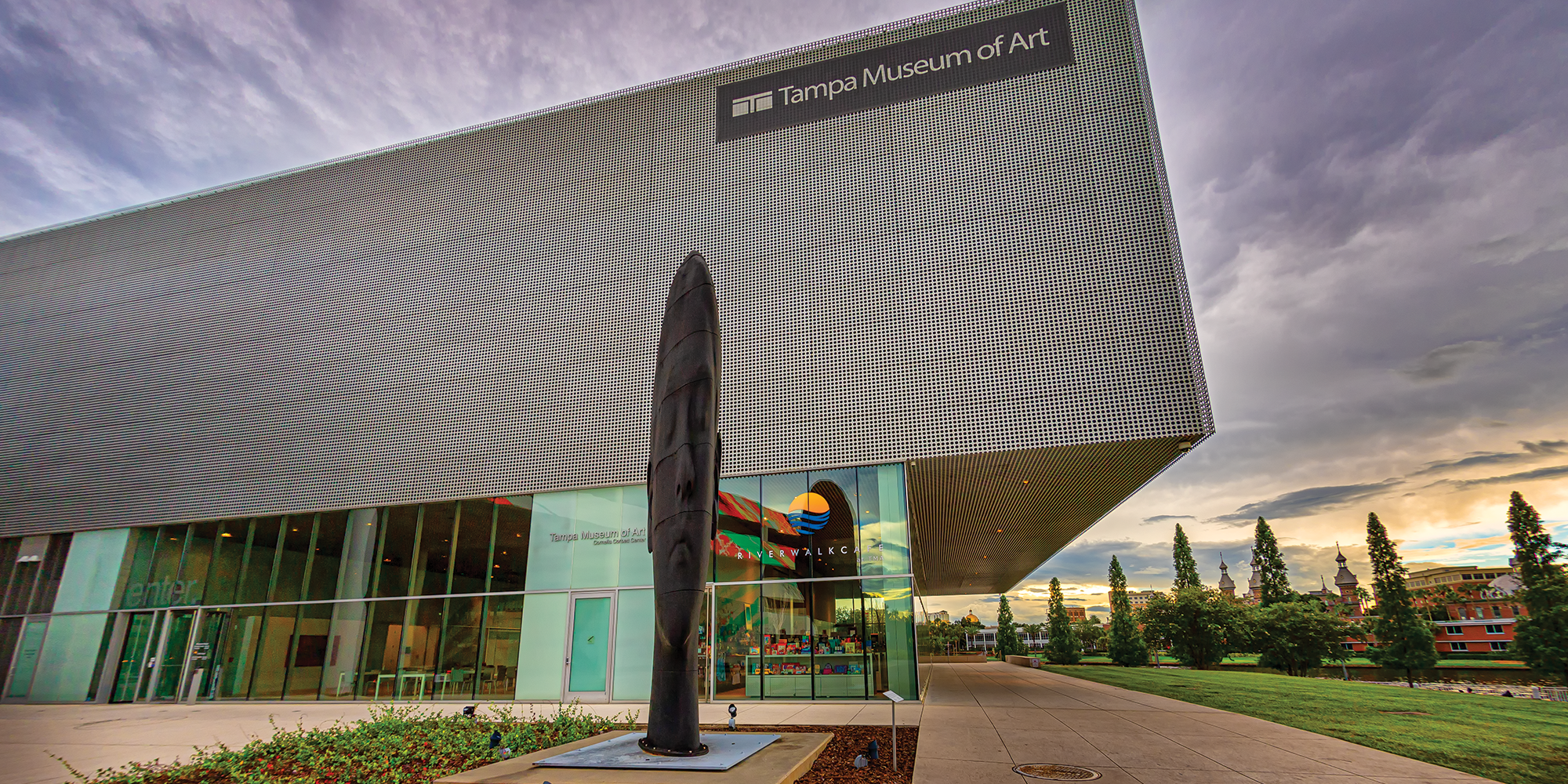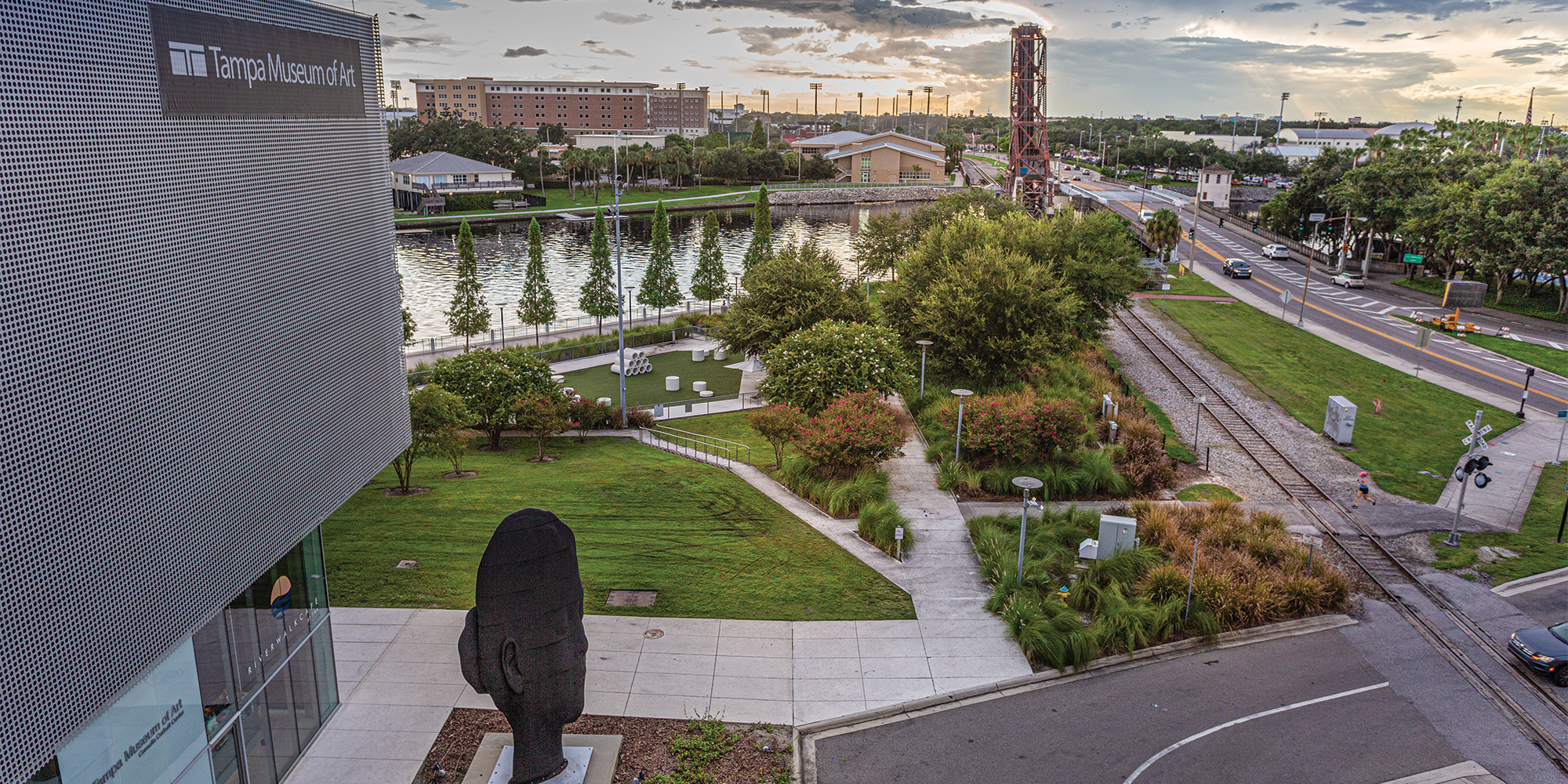
Even if it seems like a small number, 100 years is a long time — whether for a person or an entity — and deserving of a big celebration. In honor of the big three digits, the Tampa Museum of Art is getting dressed up for its upcoming exhibition The Making of a Museum: 100 Years, 100 Works, on view November 8 through March 15 for the museum’s upcoming 100th anniversary in 2020. Visitors can peruse 100 handpicked pieces from the museum’s permanent collection of around 7,700 works that best encapsulate the Tampa Museum of Art’s history and collecting mission. Just like finding an old favorite sweater tucked away in the closet, some of these works haven’t been on display in 15 to 25 years.
“The selection of the works for this show was uniquely done by our two curators, Joanna Robotham and former curator Seth Pevnick. They looked at the collection as a whole and said, ‘We believe that these 100 works best represent us,’” says Michael Tomor, Ph.D., Executive Director of the Tampa Museum of Art.
To highlight the central themes that have popped up throughout the collection, the show will be divvied up into eight categories: Classical Antiquities; Prints and Photographs Related to Classical Antiquity; the C. Paul Jennewein Archive; Painting; Decorative Arts and Sculpture; Photography; Works on Paper; and New Media, Video, and Installation Art.
Collecting habits are hard to break
The Tampa Museum of Art wasn’t always known as such. In fact, it had four other iterations: the Tampa Museum of Fine Arts, the Tampa Arts Institute, the Tampa Bay Arts Center and the Tampa Museum, before finally reaching the museum we know today.
Because of its winding history, the museum’s heaviest period of collecting mostly took place between 1985 and 2000. During this time, the museum rounded out the antiquities while building their modern and contemporary collection.
But everything has to start somewhere. The first building block in the permanent collection was an Ancient Greek black-figure Attic vase purchased by the museum in 1981. This set the stage for the next major gift in 1986, a collection developed by Joseph Veach Noble, a collector of ancient Greek and Roman artifacts and art.
“Noble collected with intent, so he wanted to make sure that the collection stayed together. Because of his ties to the director and several board members, he offered a deal to purchase the collection for a million dollars as long as we kept it intact,” Tomor says. “This was significant because it demonstrated the museum’s seriousness about collecting artifacts that have an enormous impact on students and adults about the ancient world. It was also an opportunity to leverage other collectors to come to the museum with their collections.”
On a mission: The future of TMA’s collection
Like most collections, the Tampa Museum of Art’s patterns have been based on their initial roots. What is extraordinary about this collection is the unique combination of classical and contemporary.
“What I like about our collection is that it’s a great complement to the other local art museums’ collecting habits,” Tomor says.
Gifting artworks plays a huge role in museum development: 98% of the museum’s collection has been gifted because acquisition funds weren’t allotted in the organization’s endowment. To work around this, the museum runs small campaigns through the group it created called Tampa Collects. For an annual fee, Tampa Collects members learn about collecting not only for the museum, but also for themselves; 100% of those funds go toward buying artwork every year.
“One of the things that Seth and Joanna did really well is identify the gaps in our collection that are important to fill, to better tell stories about the history of art and our culture. Our plan also is intentional about diversifying representation of art in our collections, specifically underrepresented groups,” Tomor explains. “We have taken this responsibility of collecting very seriously and have built a facility so those collections are safe and cared for.”
Whittling down 100 pieces even more, the curators shared these eight works that have special resonance to the museum’s history with unique backstories that may not be on your typical wall text. Read on for a sneak peek of 100 Years, 100 Works.
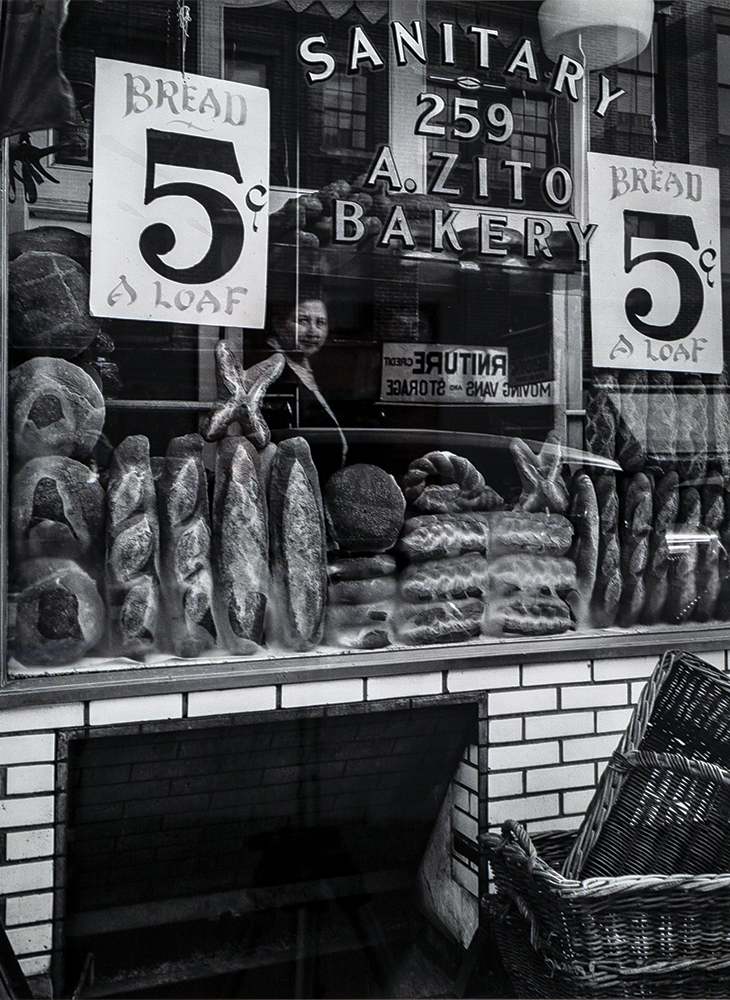
Zito’s Bakery
Berenice Abbott
Stopping by a Lower East Side bakery at the perfect moment, Berenice Abbott snapped the iconic Zito’s Bakery that ended up raising the popularity of this mom-and-pop shop. As part of her Retrospective series, all the photographs were taken in the 1930s but weren’t printed until 1982. “Photography is at the core of [our] modern and contemporary collection, with Abbott representing the strengths of our vintage photography holdings,” explains Joanna Robotham, Curator of Modern and Contemporary Art. “She was such a pioneer, and this piece encapsulates the genius of her work in how she was thinking about New York at the time, taking a more creative, artistic lens on street photography.”
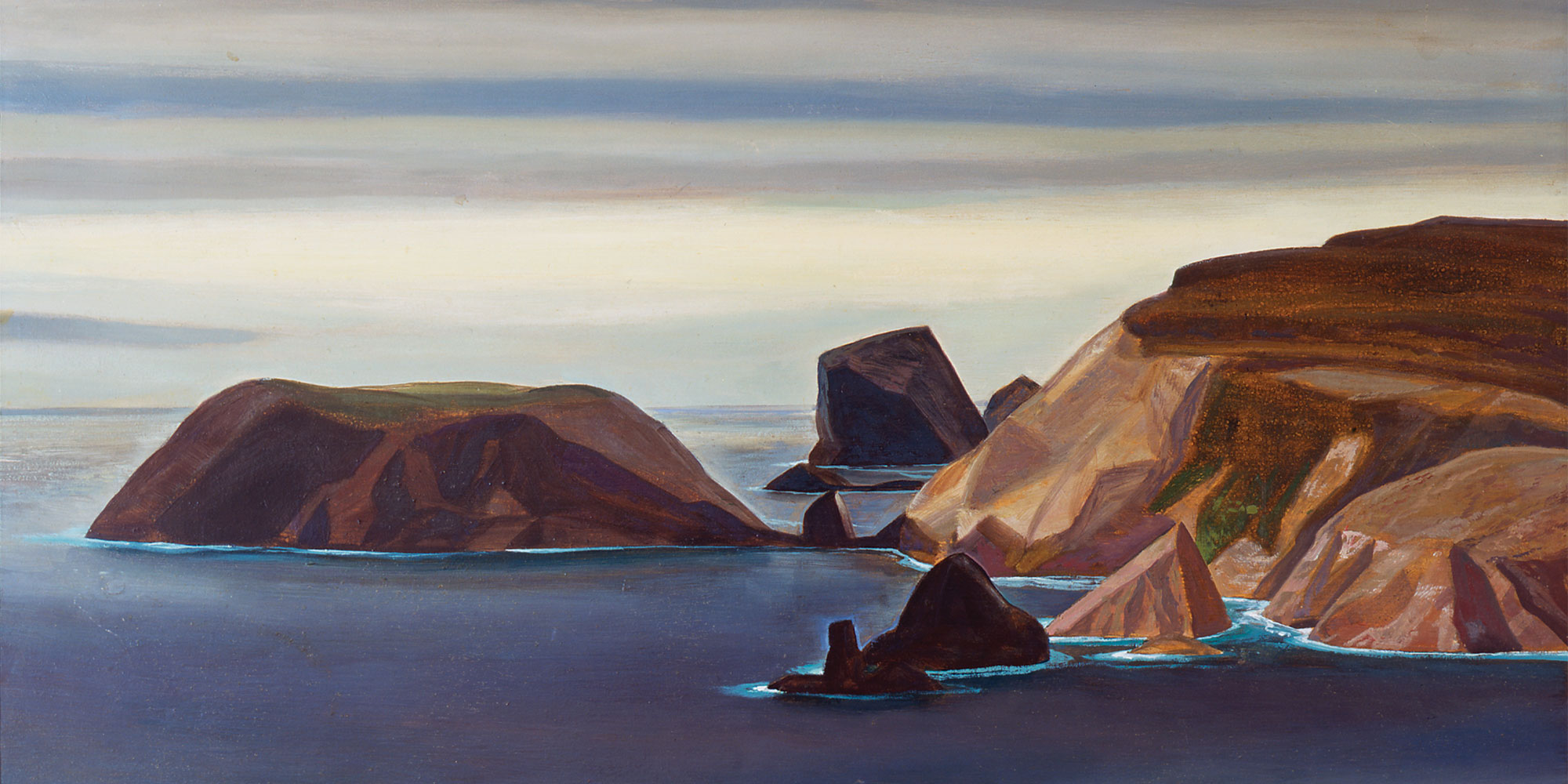
Skelpoonagh Bay, Donegal Ireland
Rockwell Kent
Because of Rockwell Kent’s passion for global travel, it’s no wonder he was influenced by transcendentalists and had deep connections to literature. Besides painting, he also did illustrations for many books, including Moby Dick. “Skelpoonagh Bay, Donegal Ireland was acquired when the museum was known as the Tampa Bay Arts Center and represents a building block in acquiring some very significant pieces early on,” says Robotham. “We also have five of his prints, which is unusual because the museum has not collected early 20th century artists in depth. I can take those six pieces and build a bigger discussion on how he was influenced by [English painter] William Hogarth and how artists have thought about landscape over time.”
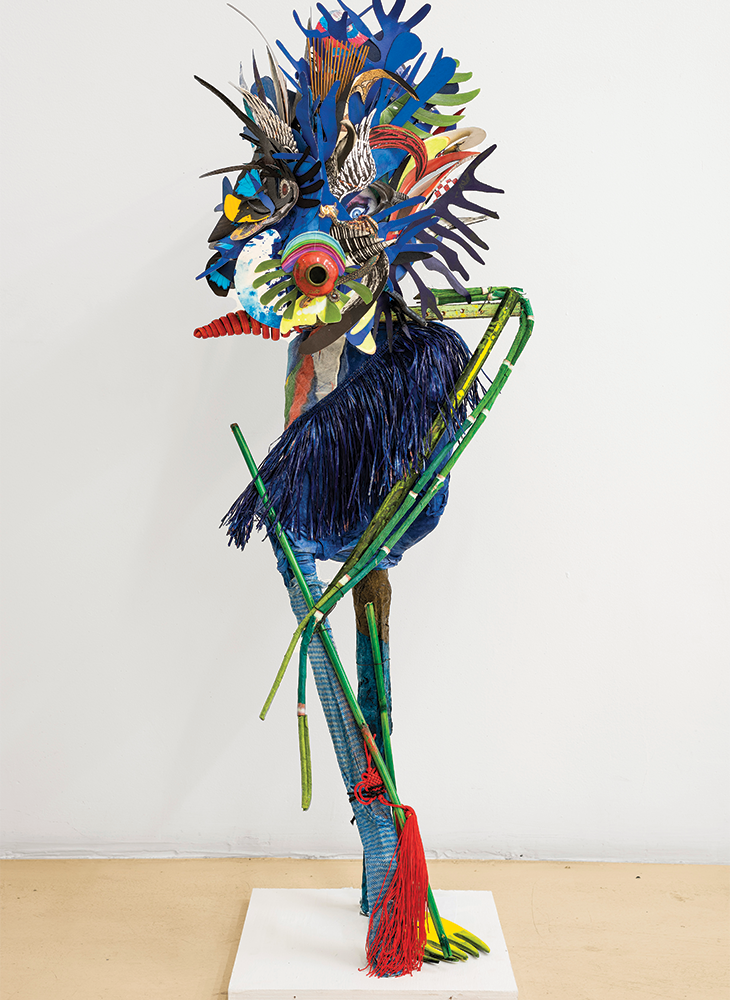
Burning Up
Pepe Mar
Newly acquired in late spring, Burning Up by Pepe Mar is hot off the press. With an elaborate composition forged from various found and thrift store-purchased materials, Mar explores his intersecting LGBTQ and Mexican-American identities. “You can identify a bird with a beak, elaborate plumage and these flamingo-like legs. In talking with the artist, the bird represents the artist’s alter ego. It’s a really abstract self-portrait, and portraiture is a collection area that we’ve been growing,” Robotham says. Fun fact: Between the work’s transition from private collection to museum donation, it went back to Pepe’s studio to replace some of the unconventional materials with more archival ones.
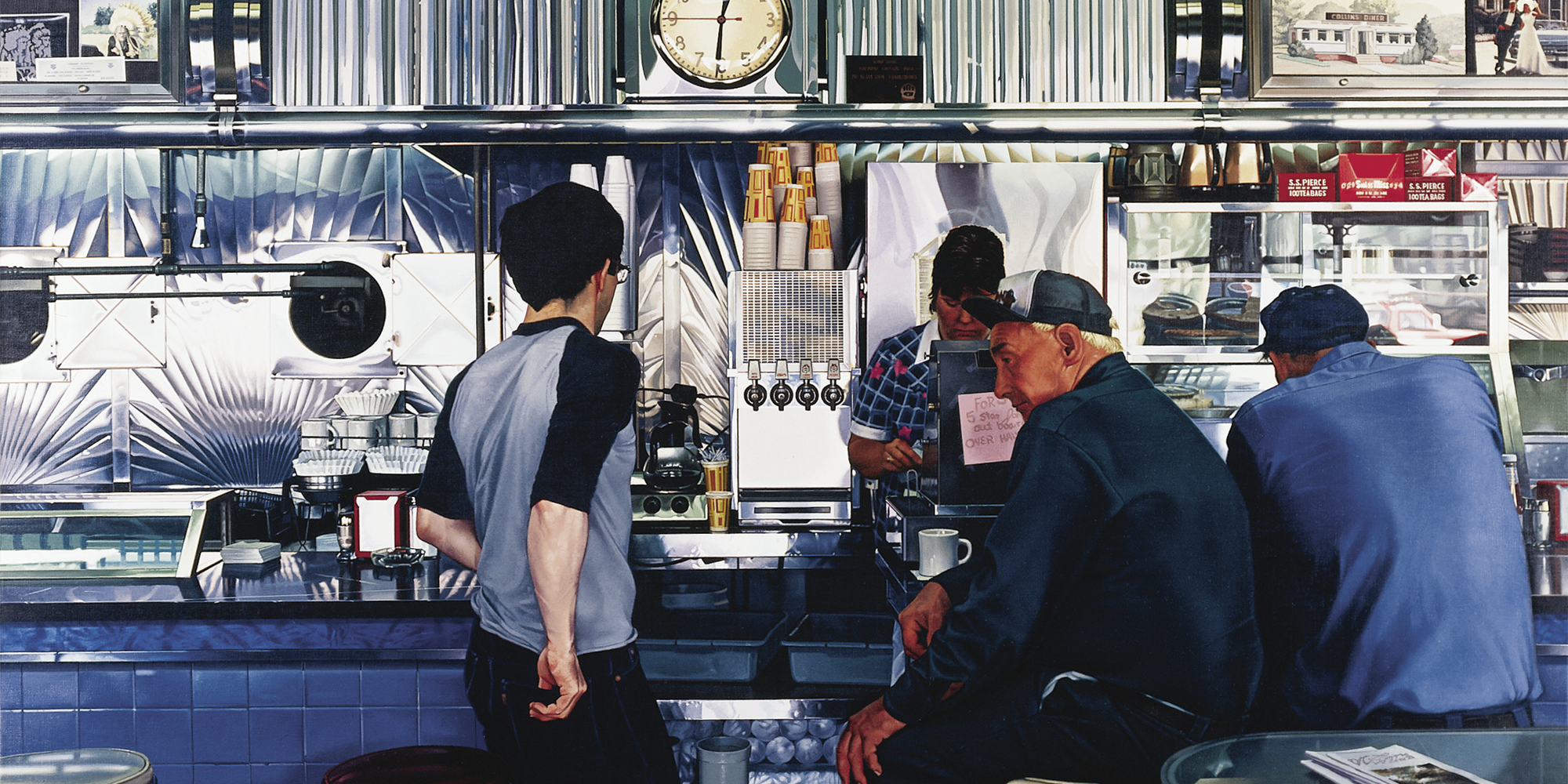
Collins Diner
Ralph Goings
If the majority of visitors were to point to their favorite piece in the collection, their attention would overwhelmingly be directed at Ralph Goings’ Collins Diner, which was featured in “Photorealism: 50 Years of Hyperrealistic Painting” in 2017. “Though we have some abstract works, most of the works in our collection would fall into figuration. This is a really wonderful painting because it just feels so real — not because it’s photorealistic, but you can feel the emotion on the gentleman’s face as he watches the young man,” Robotham says. Depictions of chrome is a quintessential element for photorealists, not denying their attraction to shiny surfaces and extraordinary detail.
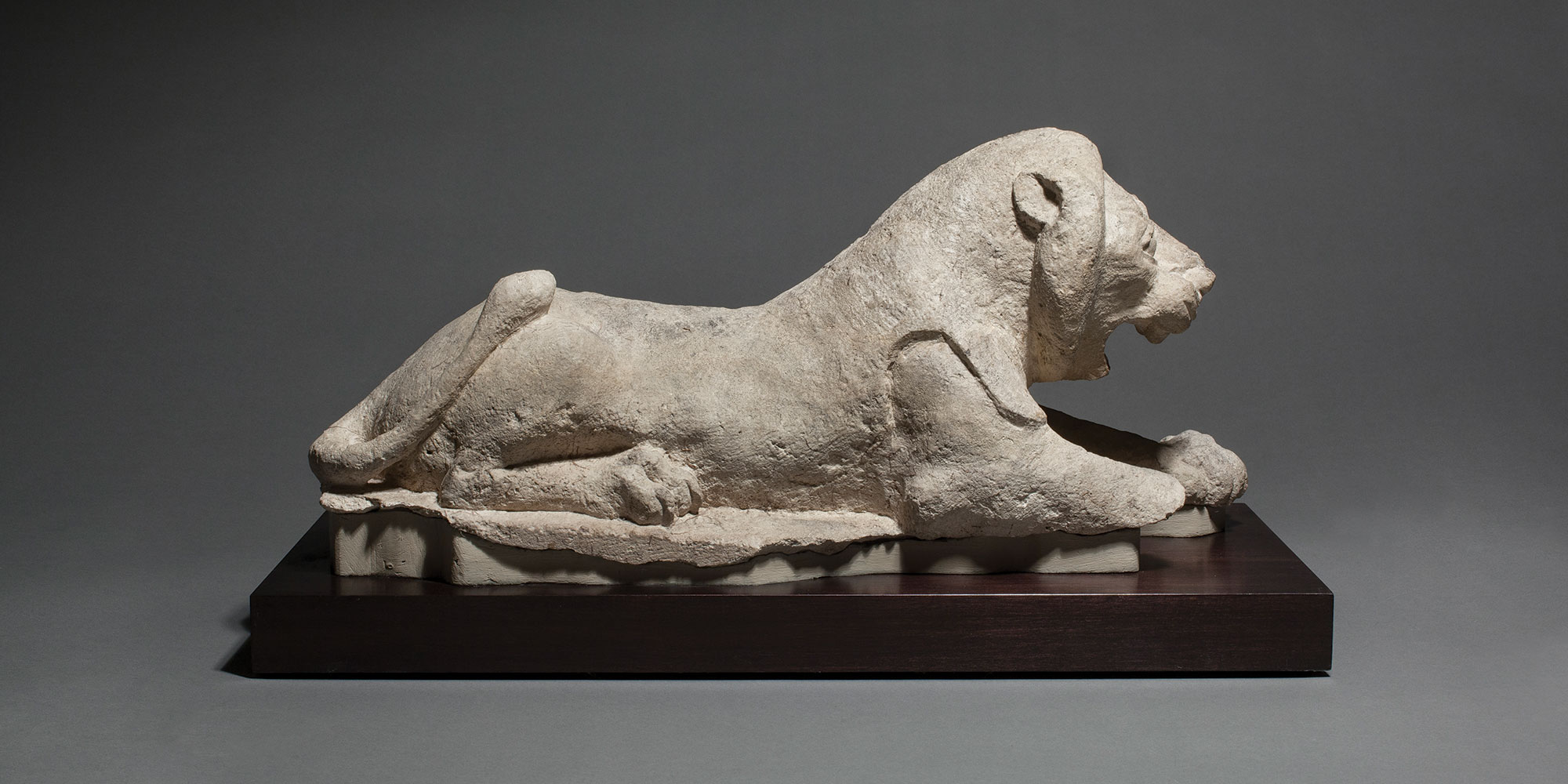
Lion Couchant
Another recent acquisition, this Greek limestone sculpture Lion Couchant is one of the first artworks to be purchased by the group Tampa Collects, along with Mernet Larsen’s Raft. “This is an important piece in the collection because there isn’t a lot of early sculpture yet in Tampa,” says Seth Pevnick, Ph.D., the museum’s former curator of Greek and Roman Art. “There are some A.D. sculptures, but those are Roman. To get something from an earlier time period was significant. This represents the future of the collection — to keep building on our strengths.”
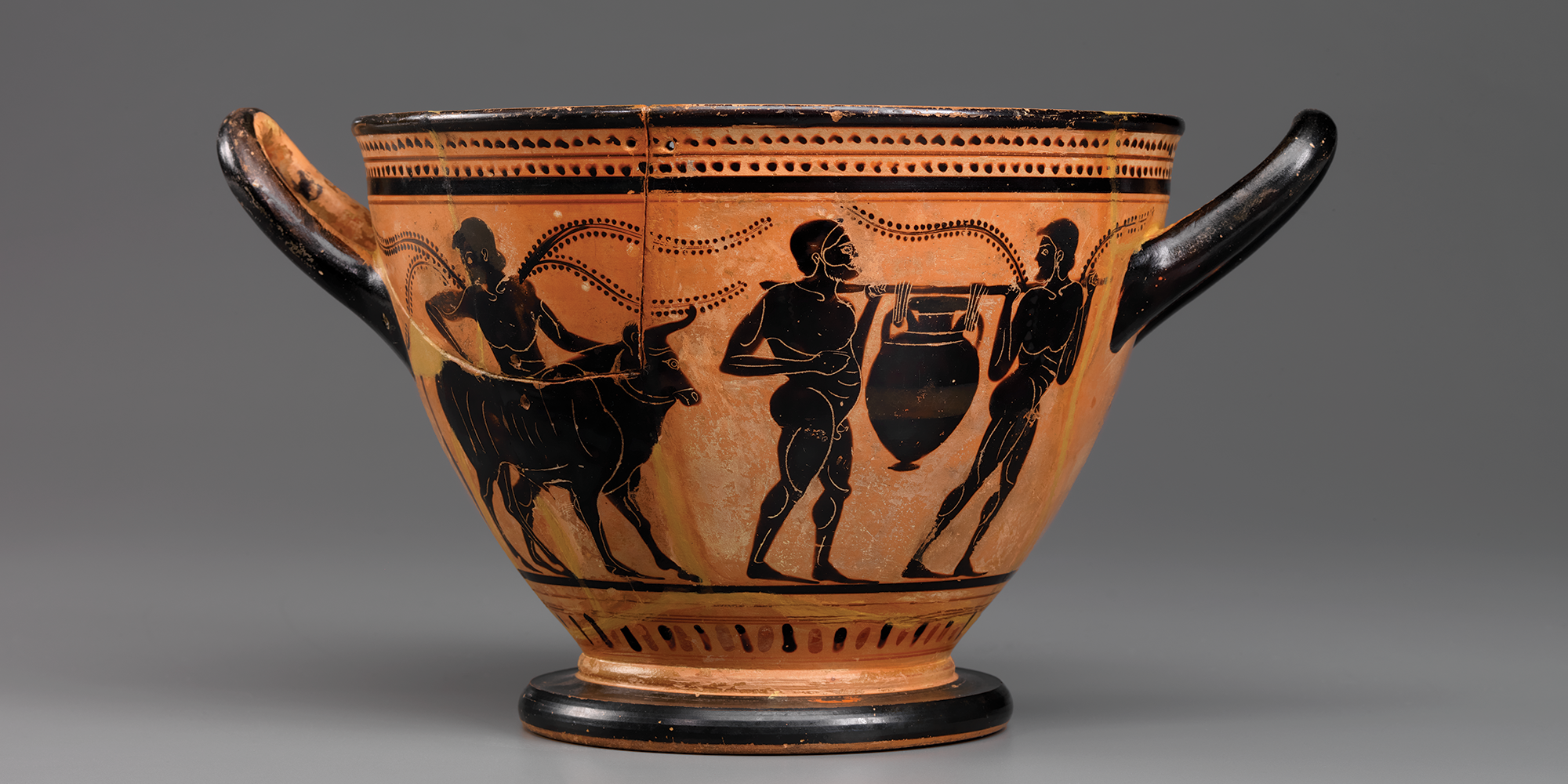
Black-Figure Skyphos (Drinking Cup)
On this black-figure Greek skyphos, a sacrificial procession wraps around both sides of the cup — the bull a likely candidate for the offering. “Red- and black-figure pottery are another one of the strengths of this museum, and it was necessary to include a piece from the Joseph Veach Noble collection, which put Tampa on the map for Greek and Roman art,” Pevnick says. “This cup really brings to life some of these ancient ceremonies and even how much wine they drank at them.” It must have been a pretty special skyphos. Though damaged in antiquity, holes were drilled in the break to clamp the cup back together so it could be used again.
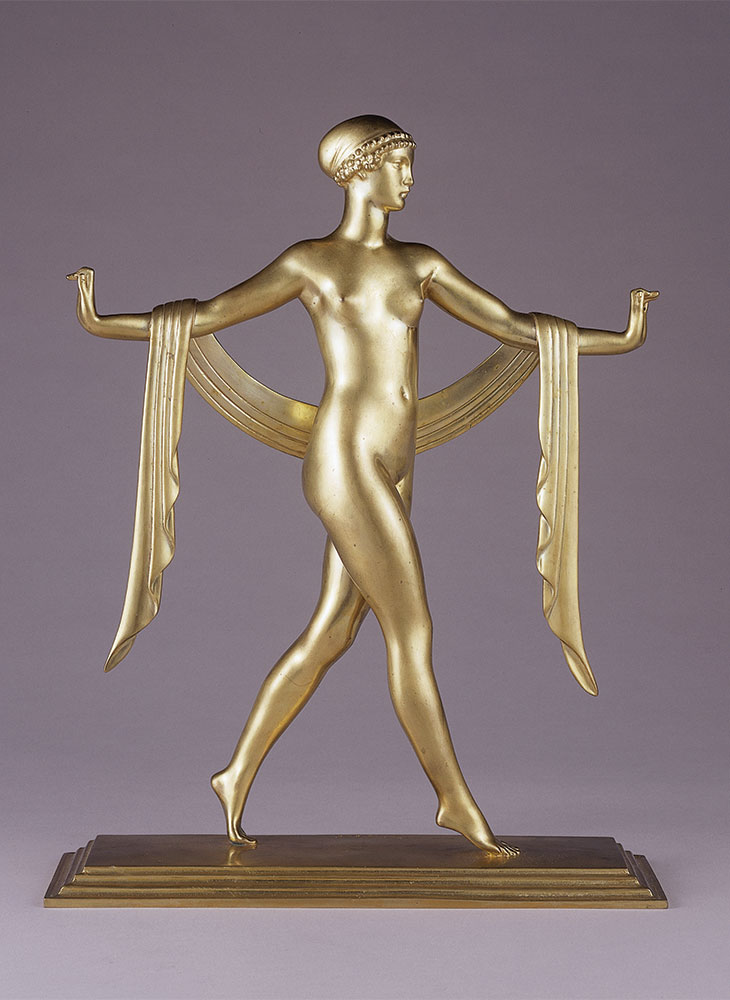
Greek Dance
C. Paul Jennewein
A gift of Brookgreen Gardens in honor of C. Paul Jennewein, Greek Dance joined a large group of Jennewein works initially bequeathed to the Tampa Bay Arts Center in 1978 and then transferred through the numerous museum name changes to the Tampa Museum of Art. “As a young artist at the American Academy in Rome in 1916, Jennewein was heavily influenced by classical art, and he became prominent in the United States for his merging of Art Deco styles with neoclassicism,” Pevnick explains. “The Tampa Museum of Art has the largest collection of his work anywhere.” This work is intriguing because it shows the lasting impact of ancient art in the contemporary world. The museum mirrors this circular path of inspiration with its “Conversations with the Collections” series of commissioned works — like Patricia Cronin’s Aphrodite statue, also in this exhibition — aimed to contemporize its antiquities and make them more relatable to younger generations.

Sky (Tampa)
Leo Villareal
Brought in by Lights on Tampa, the city of Tampa’s nationally and internationally recognized biennial of light-based works, Sky (Tampa) became TMA’s most accessible and well-known work of art. Yes, it’s art; no, they can’t change the colors for holidays. Already a pioneer of utilizing light media within the context of architecture, acclaimed artist Leo Villareal created Sky using custom software and code to create a flickering façade that never has the same iteration. “We had to come to Curtis Hixon Park at obscure times so Leo could perfect the coding and so the public wouldn’t see it,” says Nancy Seijas-Kipnis, publicist for the Tampa Museum of Art and arts consultant for previous Lights on Tampa events. “Sky did not make its official debut until the evening of the museum’s grand opening gala in its current location.”
If you are interested in learning more about the museum’s rich history and collection, the Tampa Museum of Art will be publishing a book to coincide with “The Making of a Museum: 100 Years, 100 Works.” With seven chronological chapters, the history book will also feature 100 works with explanations and will be for sale by early February.


